1846
Iowa entered the Union as the nation's 29th state during the 29th Congress, but the state legislature did not elect senators to that Congress.
1848

Long-time friends George W. Jones of Dubuque and Augustus Caesar Dodge of Burlington presented their credentials and were sworn into office as Iowa's first two United States senators. The senators then drew lots to determine their class assignments. Augustus Dodge drew Class 1, with a term to expire March 3, 1849. George Jones drew Class 3, with a term to expire March 3, 1853.
1857

The Democratic-controlled Senate resolved the contested 1855 election in Iowa of Republican James Harlan of Mount Pleasant by declaring the seat vacant. The Senate had permitted Harlan to serve during the 13 months it took to resolve the case. Five days after the Senate's action, the Iowa legislature reelected Harlan and the Senate seated him.
1868
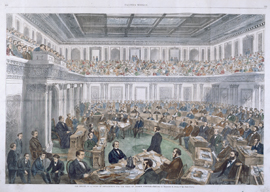
The Senate voted on articles of impeachment against President Andrew Johnson. The vote was one short of the two-thirds margin required for removal. Senator James W. Grimes of Burlington, stricken with paralysis, was carried to the chamber to vote "not guilty"—one of only seven Radical Republicans to do so. Their votes kept Johnson in office. Senator James Harlan voted for conviction.
1869
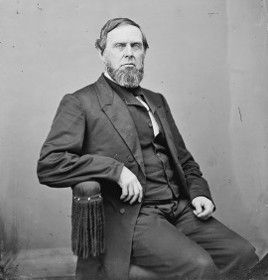
James Harlan, who returned to the Senate in 1867, became chairman of the Senate Committee on Indian Affairs, serving until 1873.
1875
William B. Allison became chairman of the Senate Committee on Indian Affairs, serving in that post until 1879.
1881

William B. Allison became chairman of the Senate Committee on Appropriations. He held that influential post for 24 years, longer than any other committee chairman in Senate history.
1897
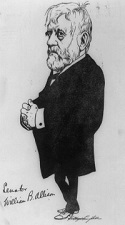
William B. Allison was elected Republican Conference chairman, a position he held until 1908. Allison was among the group of four power brokers, known as the "Senate Four," who largely controlled Senate legislative operations between 1897 and 1905.
1905

Jonathan P. Dolliver of Fort Dodge became chairman of the Senate Committee on Education and Labor (today's Committee on Health, Education, Labor, and Pensions), serving until 1909.
1908
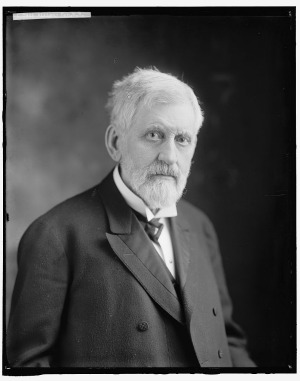
Senator William B. Allison died. At the time of his death, he had served in the Senate for 35 years and 5 months. This established him as the second longest-serving senator in history to that time (Francis E. Warren of Wyoming had served 37 years).
1908
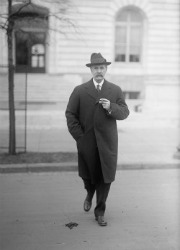
After losing two previous Senate election campaigns, Albert B. Cummins of Des Moines won election to replace Senator William B. Allison.
1909
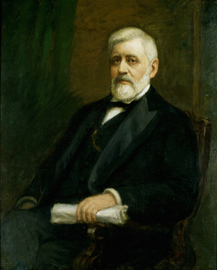
The Senate purchased an existing oil portrait of the late senator William B. Allison by artist Wilbur Reaser. The portrait is displayed in a place of honor at the south entrance to the Senate Chamber.
1909
Jonathan P. Dolliver became chairman of the Senate Committee on Agriculture and Forestry (today's Committee on Agriculture, Nutrition, and Forestry).
1910
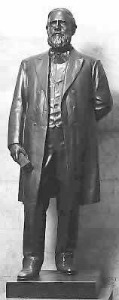
A bronze statue by artist Nellie V. Walker of former senator James Harlan was placed in the Capitol as Iowa's first contribution to the National Statuary Hall Collection. Harlan served in the Senate from 1855 to 1865 and again from 1867 to 1873. Harlan's statue was replaced by one of Norman Borlaug in 2014.
1911

Senator Lafayette Young of Eddyville read George Washington's 1796 Farewell Address on the floor of the Senate Chamber, a tradition dating to 1862.
1913

Senator William S. Kenyon of Fort Dodge was elected Republican Conference secretary, serving in that leadership position until 1915.
1913
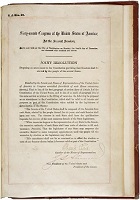
The Seventeenth Amendment to the U.S. Constitution took effect allowing for the direct election of U.S. senators. Senator Albert B. Cummins, a member since 1908, became Iowa's first popularly elected senator on November 3, 1914. As governor, Cummins had secured passage of a 1907 direct primary law for Iowa's senatorial elections.
1913
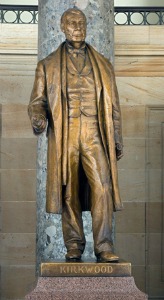
A bronze statue of Senator Samuel Jordan Kirkwood of Iowa City was placed in the Capitol as Iowa's second entry in the National Statuary Hall Collection. The sculptor was Vinnie Ream, who at age 16 earned national fame by creating the Capitol's statue of President Abraham Lincoln.
1919
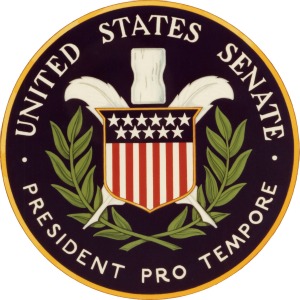
Albert B. Cummins was elected president pro tempore of the Senate, a position he held until 1925. Cummins died in office in 1926.
1919
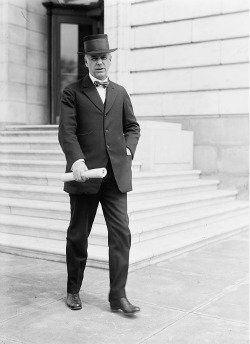
William S. Kenyon became chairman of the Senate Committee on Education and Labor (today's Committee on Health, Education, Labor, and Pensions), serving until 1922.
1924

Albert B. Cummins became chairman of the Senate Committee on the Judiciary, serving until 1926.
1926

After a month-long delay, the Senate resolved the 1924 contested election in Iowa between Daniel F. Steck and Smith W. Brookhart. Steck of Ottumwa was seated. Brookhart of Washington was the first senator unseated after a recount. He subsequently won election later in 1926 and served until 1933. He lost the elections of 1932 and 1936.
1941

Henry A. Wallace of Orient was sworn into office and began presiding over the Senate as the 33rd vice president of the United States. Wallace, a former secretary of agriculture in President Franklin D. Roosevelt's cabinet, served as vice president until 1945.
1949
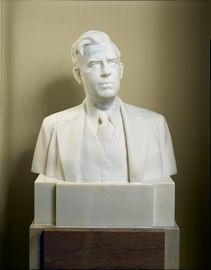
A marble portrait bust of Vice President Henry A. Wallace by artist Jo Davidson, one of the best-known American portrait sculptors of early 20th century, was placed in Senate wing of the Capitol. Part of the Senate Vice Presidential Bust Collection, the sculpture had been completed in 1947. Renovations to the Capitol's interior delayed the public display of the bust.
1962

Senator Bourke B. Hickenlooper of Blockton became the Republican Policy Committee chairman, serving in that leadership position until 1968.
1972

Richard C. Clark of Marion, administrative assistant to Representative John C. Culver of Cedar Rapids, won election to the Senate. Two years later, Culver won Iowa's other Senate seat, thereby becoming junior in the Senate to his former employee.
1974

Senator Harold E. Hughes of Ida Grove read George Washington's 1796 Farewell Address on the floor of the Senate, a tradition dating to 1862.
1984

Roger W. Jepsen of Cedar Falls received the Golden Gavel Award for presiding over the Senate for 100 hours in a single session.
2001

Thomas R. Harkin of Cumming became chairman of the Senate Committee on Agriculture, Nutrition, and Forestry. He served as ranking member from 2003 to 2007, and became chairman again from 2007 to 2009. In 2009 he became chairman of the Senate Committee on Health, Education, Labor, and Pensions.
2001

Charles E. Grassley of New Hartford became chairman of the Senate Committee on Finance. He served briefly in 2001, from January 20 to June 6 (when Vermont Republican James Jeffords became an Independent and began caucusing with the Democrats, giving Democrats control of the Senate), and returned as chairman from 2003 to 2007.
2014
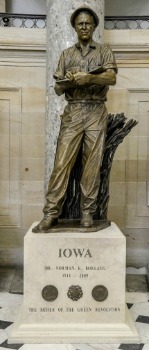
Iowa replaced its statue of U.S. Senator James Harlan in National Statuary Hall with one of Norman Borlaug, who won the Nobel Peace Prize in 1970 for his role in combating world hunger.
2015
Charles E. Grassley became chairman of the Senate Committee on the Judiciary, a position he held until January 9, 2019, when he again became chairman of the Senate Committee on Finance.
2016

Joni Ernst received the Golden Gavel Award for presiding over the Senate for 100 hours in a Congress.
She would go on to receive a second Golden Gavel on May 8, 2018.2016

Charles E. Grassley became Iowa's longest-serving senator, surpassing William B. Alison's record of 35 years, 5 months, and 1 day.
2018
Joni Ernst was elected Republican Conference vice chairman (formerly Conference secretary), a position she held from 2019 to 2023. From 2023 to 2025, she served as chair of the Republican Policy Committee.
2019

Charles Grassley became the president pro tempore of the Senate, serving until January 20, 2021, when he became president pro tempore emeritus. He was again elected as president pro tempore on January 3, 2025.
2019
Charles E. Grassley became chairman of the Senate Committee on Finance, a position he held until 2021.
2023
Charles E. Grassley became the longest-serving Republican senator, surpassing the 42-year record set by Orrin Hatch of Utah in 2019.
2025
Charles E. Grassley became chairman of the Senate Committee on the Judiciary. Joni Ernst became chair of the Senate Committee on Small Business and Entrepreneurship.